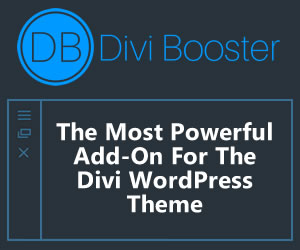I have build many websites in my 15 years of career for my full time job and for my freelancing work. Some of the websites were very complex and took many months of coding while some websites were simple and did not require any coding. When I talk to my clients to explore their business needs, I do not bring technology, graphics or content in my conversation. I focus on the message that client want to spread.
For building an effective website, it is very important to know what are you trying to achieve. Your goal could be building your brand name, selling a product or convey a message, whatever the goal is, you want to identify what you want visitors to do after they land on your website.
I encourage you to start with a single page website and then grow from there. On this single page, you would want to put a nice banner picture, 2-3 call to action buttons, one paragraph to introduce what you do and finally guide them to the action that you want them to perform.
Regarding website platforms, I like WordPress and I am a huge fan of WordPress simplicity and its marketplace. Hosting WordPress based website is cheaper, installation is very easy and finding additional Plugin to extend functionality is a piece of cake.
In following steps, I will hold your hand and take you to a step-by-step journey.
Step 1 – Purchase domain name
As people say, a good start is half work done, your domain is the most important element for your website. Domain name should be easy to remember, easy to type and relevant to your website. There are so many places where you can purchase your domain and few are listed as below.
- www.bluehost.com
- www.godaddy.com
- www.fatcow.com
- www.hostgator.com
- www.namecheap.com
- www.dreamhost.com
- www.hover.com
Step 2 – Purchase hosting
There are many good hosting companies to chose from and typically WordPress hosting does not cost much. There are options available from $3 and up depending upon contracting terms and hosting company brand. In my research I found Bluehost as one of the best option. It is most economical without signing long term contract but you can get it as low as $3.49 per month if you sign up for 3 years. Bluehost is also a top recommendation from wordpress.org

Another good option is FatCow.
Step 3 – Install WordPress
Installing WordPress is a very easy process. If you purchase hosting from Bluehost then you can follow their walk-through or step by step guide https://my.bluehost.com/hosting/help/wordpress
Step 4 – Install WordPress Theme
I personally uses Woothemes for most of my WordPress websites. Primarily, because I had purchased developer subscription of Woothemes in past which gave me access to all their themes. I also found that administrative section of their themes is very simple or organized.
I have used “The One Pager” WordPress theme from the WooThemes. WooThemes also have few free themes such as http://www.woothemes.com/storefront/ that you can install on your self-hosted WordPress directly from Appearance –> Themes page. Storefront is an intuitive & flexible, free WordPress theme offering deep integration with WooCommerce.
Step 5 – Install WordPress Plugins
Plugins extend functionality of your WordPress website. Following free Plugins are a good way to start.
- Yoast SEO – https://wordpress.org/plugins/wordpress-seo/
- Contact Form 7 – https://wordpress.org/plugins/contact-form-7/
- WP Super Cache – https://wordpress.org/plugins/wp-super-cache/
- WooCommerce – excelling eCommerce – https://wordpress.org/plugins/woocommerce/
- Ultimate Social Media – https://wordpress.org/plugins/ultimate-social-media-icons/
You could install WordPress Plugins directly from your WordPress dashboard page.
Step 6 – Set up homepage
In this step, you will have to go to the Widget section of your WordPress site and use multiple Widgets. In a typical website or blog, you will use following Widget.
- Image or slider Widget
- Woo – Component (display page content from your introduction page)
- Woo – Component (display post timeline)
- Woo – Component (display blog post)
- Woo – Component (display contact area)
Step 7 – Set up interior pages and sidebar
In this step, first thing to do is to remove any existing Widget available on the sidebar. Most of these Widget gives your website a classic blog page look. Instead, use following Widget as your starting point.
- Search
- Text (display your sponsors or other information)
- Recent Post
- Recent Comments
Step 8 – Setup Social Network
You should set up Facebook, Twitter, Google+ & Google Local before you launch your website. You should also consider additional social network depending upon the nature of your business and targeted audience.




